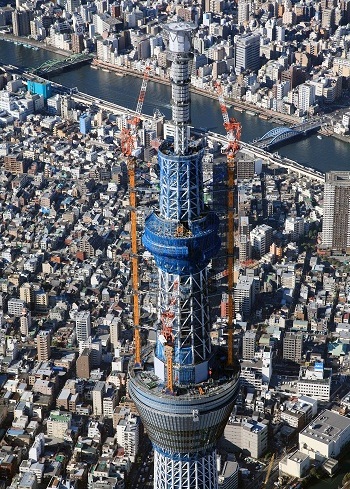
This impressive structure is intended to act as a catalyst for the revitalisation of the city and to contribute to disaster prevention. Its aesthetic appeal lies in the combination of futuristic and traditional Japanese elements reflected in the design.
The tower is painted in a colour officially called "Sky Tree White", an original colour based on a bluish-white traditional colour called aijiro. It will also be illuminated by sky-blue and purple LEDs.
The name Tokyo Sky Tree was decided upon after a public vote and was officially announced on 10 June 2008 after receiving over 33,000 votes (30% of the total).
The height of the tower, 634 metres, was selected so that it could be easily remembered. The numbers in Japanese - 6 (mu), 3 (sa) and 4 (shi) - stand for 'Musashi', an old name for the region in which modern Tokyo is located.
|

